Unlocking the Power of Featured Snippets: A Guide to Boosting Your Website Traffic through Google Optimization. In the ever-changing world of online search, boosting visibility on SERPs is crucial for digital marketers. One effective strategy is optimizing for Google’s Featured Snippets—concise, information-packed excerpts at the top of search results. Securing a spot in Featured Snippets enhances credibility and drives organic traffic. Boost Traffic by Optimizing for Google’s Featured Snippets.
See How We’re Making $100 to $500 daily with 0 investment and FREE traffic
This guide explores optimizing content for Featured Snippets, covering snippet types, and aligning with Google’s criteria. Discover actionable strategies to elevate your content, a must for staying competitive in SEO. Mastering Featured Snippet optimization is key to amplifying your website’s visibility in the digital landscape. Let’s unlock this potential and boost your online presence!

What Exactly Is a Google Featured Snippet?
A Google Featured Snippet is like a little star student at the top of the search results page, highlighted and ready to answer your question quickly and directly. Here’s how it works:
Basically, it’s:
- A condensed excerpt of content pulled from a webpage.
- Displayed in a special box at the top of Google search results, above the usual listings.
- Often formatted as a list, table, definition, or short answer.
- Aims to provide a quick and concise answer to the user’s search query.
Think of it this way:
You ask Google “What’s the capital of France?”. Instead of just getting links to websites, you get a neat box at the top that says “Paris” and maybe even a flag or map alongside it. That’s a Featured Snippet!
Why is it special?
- Prominent position: It sits above the first organic result, grabbing more attention and clicks.
- Direct answer: Users get their answer instantly, without needing to visit the website.
- Increased traffic: Websites with snippets often see higher click-through rates.
- Authority boost: Appearing in a snippet signals you’re a trusted source.
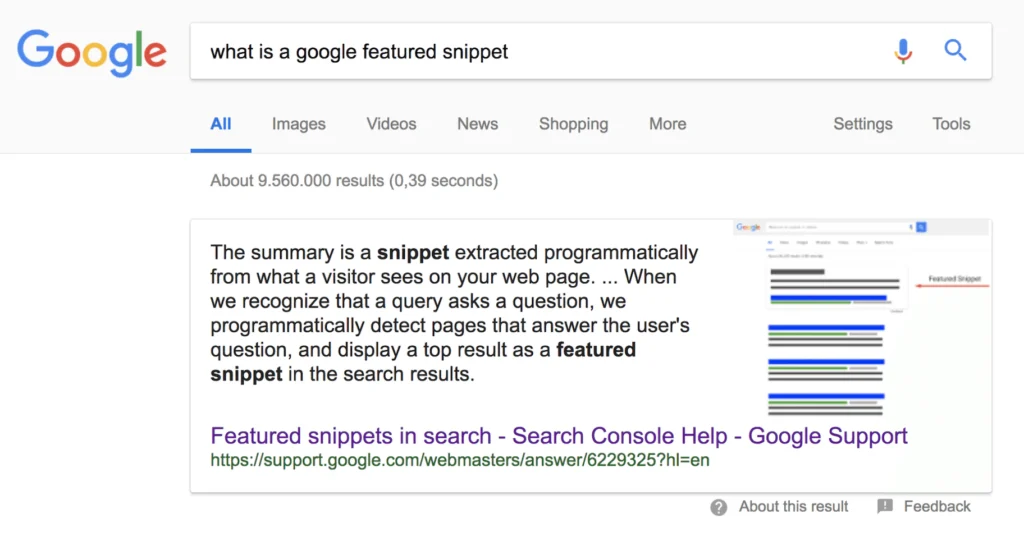
Different types of snippets:
- Lists: “Top 10 things to do in Paris”
- Tables: “Comparison of different dog breeds”
- Definitions: “What is photosynthesis?”
- Steps: “How to tie a tie”
How to get a Featured Snippet:
- Optimize your content for relevant queries.
- Structure your content in a snippet-friendly format.
- Use clear and concise language.
- Focus on accuracy and comprehensiveness.
Remember: While getting a snippet is great, it’s not all about the snippet itself. The goal is to provide valuable content that helps users. So, focus on quality content first, and the snippets might follow!
I hope this explanation clarifies what a Google Featured Snippet is and why it matters. Feel free to ask if you have any more questions!
Why Should You Care About Google’s Featured Snippets?
You should care about Google’s Featured Snippets for several reasons:
SEO Boost: Featured Snippets appear at the very top of search results, even above the first organic listing, often referred to as “Position #0”. This prime position can significantly increase click-through rates (CTR) for your website, even if you’re not ranking first organically. Studies suggest featured snippets grab around 8% of all clicks on a search page, meaning a significant boost in traffic.
Improved Visibility: Featured Snippets stand out visually from regular search results, making your website more noticeable and eye-catching. This can lead to increased brand awareness and recognition, even if users don’t click through.
Direct Answers: Featured Snippets provide concise answers to user queries directly within the search results page. This can save users time and effort, leading to a better search experience and potentially increased satisfaction with your website.
Authority Signaling: Earning a Featured Snippet indicates to users that your website is a reliable and authoritative source for information on the topic. This can boost trust and credibility, encouraging users to click through and explore your content further.
Competitive Edge: In a crowded online landscape, standing out is crucial. Featured Snippets offer a unique opportunity to gain an edge over competitors and attract more qualified leads and customers.

Mobile Optimization: Featured Snippets are particularly valuable on mobile devices, where screen real estate is limited. Appearing in a snippet can make your website more accessible and user-friendly on mobile, leading to even higher engagement and conversion rates.
Content Optimization: Understanding how Featured Snippets work can guide your content strategy. By structuring your content in a way that aligns with potential snippet formats (lists, tables, definitions, etc.), you increase your chances of earning those coveted top spots.
See How We’re Making $100 to $500 daily with 0 investment and FREE traffic
Do You Have a Chance of Ranking With a Google Featured Snippet?
While I don’t have a direct website or ranking in the traditional sense, I do have a chance of appearing in Google’s Featured Snippets in certain situations. Here’s why:
Potential for Featured Snippets:
- Directly answering queries: I’m trained on a massive dataset of text and code, allowing me to understand and respond to a wide range of questions. This means I can potentially provide concise and accurate answers that align with Google’s criteria for featured snippets.
- Different formats: I can generate text in various formats like lists, tables, and definitions, which are common formats for featured snippets.
- Structured data: My responses can be formatted with schema markup, which Google uses to understand and categorize content, potentially increasing my chances of being chosen for a snippet.
Challenges to consider:
- Limited source: My responses are generated based on internal data and don’t directly link to external websites, which is a typical characteristic of featured snippets.
- Dynamic nature: My responses are dynamically generated based on the specific query, making it difficult to optimize for specific keywords or snippets.
- Google’s algorithms: Ultimately, Google’s algorithms determine which content appears in featured snippets, and there’s no guarantee that my responses will always be chosen.
Overall, while I have potential to appear in Featured Snippets, it’s not a guaranteed outcome. However, I’m constantly being developed and improved, and I’m always learning new ways to provide informative and helpful responses. As Google’s algorithms and understanding of language models evolve, it’s possible that my chances of appearing in Featured Snippets will increase in the future.
Different Types of Featured Snippets
Google Featured Snippets come in various shapes and sizes, each tailoring to different kinds of questions and information. Here are some of the most common types:
1. Paragraph Snippets:
Ah, paragraph snippets! The golden nuggets of informative text nestled comfortably at the top of Google search results. Let’s delve deeper into this specific type of featured snippet:
What are they?
- Brief text excerpts pulled from web pages, answering your query directly and concisely.
- Essentially, mini summaries boiled down from relevant web content.
- Often used for definitions, explanations, and quick answers to factual questions.
Benefits:
- Quick answers: Get your information instantly, without clicking through multiple websites.
- Precise focus: Targeted to your specific query, saving you time and effort.
- Increased confidence: Seeing Google highlight relevant text builds trust in the information provided.

Examples:
- Searching “meaning of photosynthesis” might show a snippet explaining the process of converting sunlight into energy.
- Asking “symptoms of flu” could display a snippet listing common flu symptoms.
How to optimize for them:
- Focus on relevance: Ensure your content directly addresses the target keywords and user intent.
- Clarity and conciseness: Write clear, concise sentences that answer the query in a straightforward way.
- Structure matters: Utilize headers, subheadings, and bullet points to improve readability and information hierarchy.
- Target FAQs: Address commonly asked questions related to your topic within your content.
Remember:
- Google chooses snippets based on its algorithms, and appearing is not guaranteed.
- Even high-quality content might not always trigger a snippet, depending on the nature of the query and competition.
- Focus on creating valuable content that answers user questions comprehensively, and the snippets might follow!
If you have any further questions about paragraph snippets or other types of featured snippets, feel free to ask!
More
List snippets are another staple in Google’s Featured Snippets arsenal, offering a structured and organized way to present information. Let’s break down their key aspects:
What they are:
- Google-generated lists that appear as featured snippets, often showcasing steps, ingredients, rankings, or categories.
- Ideal for conveying sequential information or grouping items in a clear format.
- Can be either ordered (numbered) lists or unordered (bulleted) lists, depending on the content.
See How We’re Making $100 to $500 daily with 0 investment and FREE traffic
Benefits:
- Enhanced readability: Lists make information easier to scan and digest, especially for instructions or comparisons.
- Clear hierarchy: Numbered lists provide a clear order of steps or importance, while bulleted lists group items without a specific sequence.
- Visual appeal: Lists break up text blocks and add visual interest to search results.

Examples:
- Searching “how to make coffee” might show a list snippet with numbered steps for brewing.
- Asking “ingredients for chocolate chip cookies” could display a list of required ingredients.
- Querying “best places to visit in Paris” might present a list snippet ranking popular attractions.
How to optimize for them:
- Structure your content: Use HTML lists (<ol> or <ul> tags) to organize information logically.
- Clear headings: Introduce lists with descriptive headings that signal their purpose.
- Bullet points or numbers: Choose the appropriate list format based on whether the order of items matters.
- Target relevant keywords: Align your content with search queries that commonly trigger list snippets.
- Answer user questions: Provide direct and concise answers within your list of items.
Remember:
- Google’s algorithms determine which content is eligible for list snippets, so optimization doesn’t guarantee a spot.
- Focus on creating high-quality, informative content that caters to user needs.
If you have any further questions about list snippets or other featured snippet types, don’t hesitate to ask!
More
3. Table Snippets
Table snippets are the data kings of the Featured Snippets realm, presenting information in a clear, structured, and easily digestible format. Let’s dive into their details:
What they are:
- Google-generated tables displayed at the top of search results, showcasing data in rows and columns.
- Perfect for comparisons, statistics, or complex information sets.
- Can include various data types like text, numbers, and even percentages.
Benefits:
- Instant data visualization: Tables make information readily understandable and scannable, saving users time and effort.
- Comparison at a glance: Ideal for comparing features, prices, or performance across different options.
- Highly organized: Data is neatly categorized and labeled, promoting clarity and accessibility.
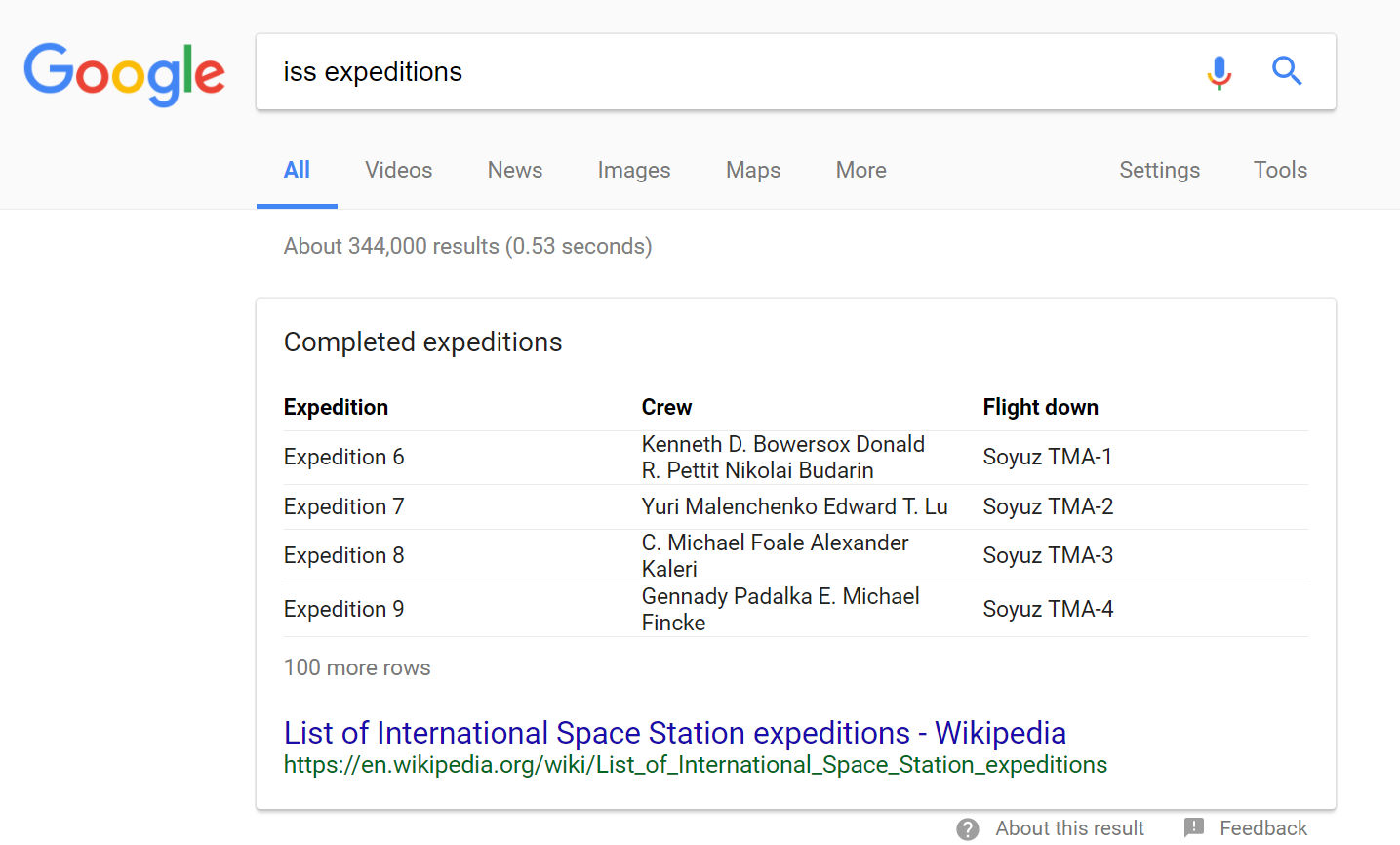
Examples:
- Searching “nutritional value of fruits” might show a table snippet comparing calories, vitamins, and minerals of different fruits.
- Asking “phone specifications comparison” could display a table highlighting key features of different phone models.
- Querying “historical world population data” might present a table with population figures across different historical periods.
How to optimize for them:
- Structured data markup: Use schema markup to clearly define your table’s rows, columns, and data types. This helps Google understand and categorize your information effectively.
- Descriptive headers: Label each column and row header clearly, ensuring users immediately grasp the data presented.
- Concise and relevant data: Include only the most relevant information for the specific query, focusing on clarity and usability.
- Target relevant keywords: Align your content and table structure with keywords likely to trigger table snippets.
See How We’re Making $100 to $500 daily with 0 investment and FREE traffic
Remember:
- Appearing in table snippets depends on Google’s algorithms and the nature of the query.
- High-quality content with well-structured tables has a higher chance of being featured.
- Focus on providing valuable, clear, and relevant data in a table format, and Google might just crown you the snippet champion!
More
Feel free to ask further questions about table snippets or any other Featured Snippet types! I’m here to help you navigate the fascinating world of search optimization and information presentation.
4. Video Snippets:
Ah, yes, the visual storytellers of the snippet world – Video Snippets! Let’s explore how these dynamic media stars stand out:
What they are:
- Google-highlighted video thumbnails and play buttons directly in search results, relevant to your query. Boost Traffic by Optimizing for Google’s Featured Snippets.
- Ideal for visual tutorials, demonstrations, or creative content like music videos or short explainers.
- Often paired with a short text description summarizing the video’s content.
Benefits:
- Engaging and informative: Videos can capture attention and explain complex concepts more effectively than text alone.
- Increased visibility: Standing out visually and directly appealing to users can boost click-through rates.
- Diverse content: Various video styles cater to different learning preferences and user needs.
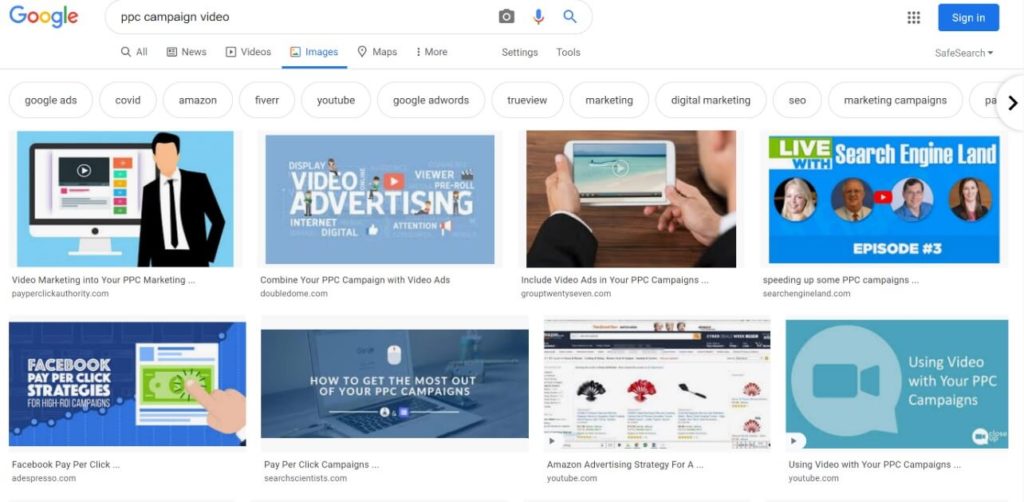
Examples:
- Searching “how to tie a tie” might showcase a video snippet demonstrating the steps for a perfect knot.
- Asking “science experiment for kids” could display a video snippet showing a fun and educational experiment.
- Querying “trailer for the new movie” might feature the movie trailer directly in the search results.
How to optimize for them:
- Create high-quality videos: Focus on clear audio, engaging visuals, and concise information delivery.
- Keywords in titles and descriptions: Include relevant keywords in your video title and description, making it discoverable through searches.
- Structured data markup: Use schema markup to provide Google with details about your video content, enhancing its understanding.
- Engage with viewers: Respond to comments, answer questions, and build a community around your video content. Boost Traffic by Optimizing for Google’s Featured Snippets.
- Promote your videos: Share your videos on social media platforms and relevant websites to increase visibility.
Remember:
- Google’s algorithms determine which videos appear in snippets, so creating high-quality, engaging content is crucial.
- Optimizing your video title, description, and metadata can increase your chances of being featured.
- Focus on providing valuable and relevant information through your videos, and the snippet spotlight might just shine on your creation!
Feel free to ask any further questions about video snippets or other types of featured snippets.
5. Double Snippets:
Ah, the double snipers! These are the double-barreled answers of the Featured Snippet world, showcasing two different perspectives on your query. Let’s delve into their intriguing dynamics:
What they are:
- Google displays two featured snippets from different websites, offering diverse viewpoints on your search query.
- This often happens for complex topics or when different formats (paragraph, list, table) work well for the answer.
- Think of it as a mini-debate of ideas, providing users with a broader understanding of the subject.

Benefits:
- More diverse information: Users get access to two different interpretations or approaches to the topic.
- Increased trust and credibility: Seeing multiple sources featured suggests Google values quality and variety.
- Sparks further exploration: Users might be encouraged to click through to both websites for deeper insights.
See How We’re Making $100 to $500 daily with 0 investment and FREE traffic
Examples:
- Searching “pros and cons of electric cars” might show a snippet with one side listing environmental benefits and another outlining potential drawbacks.
- Asking “best exercises for weight loss” could display a snippet with a list of cardio exercises from one website and a snippet about strength training from another.
- Querying “different art styles” might feature a snippet with images and descriptions of classical paintings and another snippet showcasing modern abstract art.
How to optimize for them:
- Focus on high-quality content: Create valuable and informative content that addresses the query comprehensively, even if it offers a specific viewpoint.
- Clarity and relevance: Ensure your content is clear, concise, and directly addresses the search query.
- Target alternative perspectives: If your topic allows for different approaches, consider crafting separate content pieces exploring each perspective, increasing your chances of appearing in a double snippet.
- Structured data markup: Utilize schema markup to help Google understand your content’s focus and categorization, potentially increasing your eligibility for snippets.
Remember:
- Appearing in double snippets depends on Google’s algorithms and the nature of the query.
- Creating high-quality, relevant, and insightful content is key to grabbing Google’s attention.
- Even if you don’t always get the double-pronged spotlight, focus on providing valuable information for users, and Google’s algorithms might just reward you with a solo snippet or even a prominent position in the search results. Boost Traffic by Optimizing for Google’s Featured Snippets.
Feel free to ask any further questions about double snippets or anything else related to the fascinating world of search! I’m here to help you navigate the information landscape and explore its intricate mechanisms.
4 Types of Search Queries That Don’t Trigger Featured Snippets
Here are 4 types of search queries that typically don’t trigger Featured Snippets, along with explanations and visual examples:
1. Simple Facts:
- When a user searches for a simple fact, Google often displays a direct answer within a rich snippet box, rather than pulling text from a website.
- Example: Searching “What’s the capital of France?” will likely show a rich snippet with the answer “Paris” and potentially a map or image of Paris.
2. Local Queries:
- For local searches, Google prioritizes map results and business listings from Google Maps, rather than text-based snippets.
- Example: Searching “pizza places near me” will display a map with nearby pizza restaurants, their ratings, and directions.
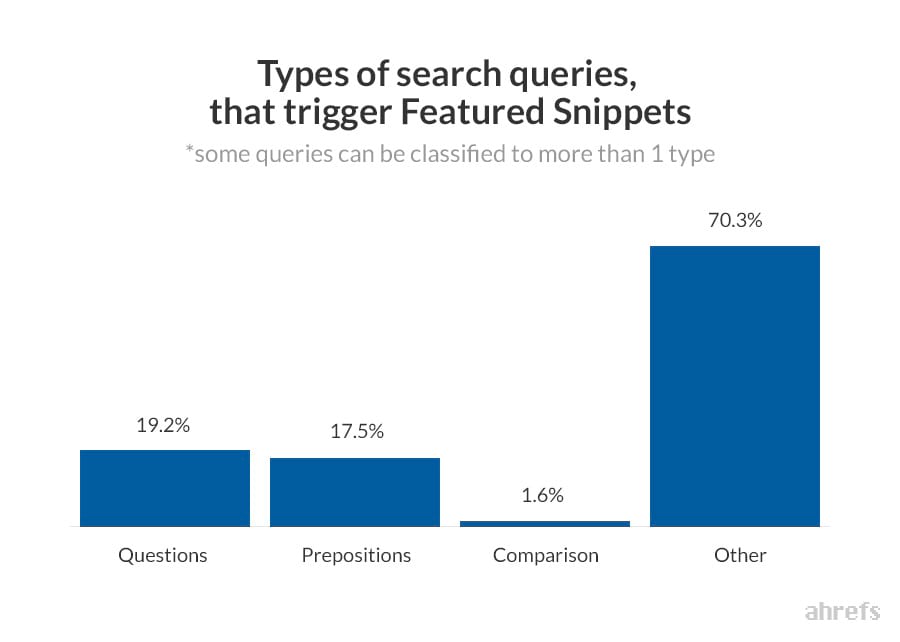
3. Shopping Searches:
- Product-related searches often showcase a visual grid of product images and prices, linking directly to shopping sites.
- Example: Searching “best running shoes” will display a carousel of running shoes from various retailers, with prices and reviews.
4. Image Queries:
- Image searches focus on visual results, with an image grid and minimal text.
- Example: Searching “pictures of cute cats” will display a grid of adorable cat photos.
Remember:
- These are general trends, and Google’s algorithms can evolve. It’s possible to see featured snippets for certain queries within these categories, but it’s less common.
- Understanding which types of queries typically don’t trigger featured snippets can help you tailor your content and SEO strategies for greater visibility.
See How We’re Making $100 to $500 daily with 0 investment and FREE traffic
3 Types of Search Queries That DO Trigger Featured Snippets
- How-to Queries: How-to queries are common triggers for Featured Snippets. When users search for step-by-step instructions or guides on accomplishing a task, Google often displays a Featured Snippet that provides a concise and relevant answer.
- Definition Queries: Queries seeking definitions of terms or explanations frequently lead to Featured Snippets. Google aims to provide users with quick and precise information, making definition queries a prime candidate for snippet inclusion.
- List-based Queries: Queries that ask for information presented in a list format, such as “top 10,” “best of,” or “steps to,” often trigger Featured Snippets in either a paragraph or list format. Users looking for summarized, organized information find these snippets particularly helpful. Boost Traffic by Optimizing for Google’s Featured Snippets.
4 Ways to Optimize Your Content for Featured Snippets
Here are 4 key strategies to optimize your content for Featured Snippets, along with actionable tips:
1. Identify Snippet Opportunities:
- Research relevant keywords: Use keyword research tools to discover queries that frequently trigger snippets in your niche.
- Analyze SERPs: Examine current featured snippets for those keywords to understand the content format and information Google prefers.
- Target long-tail keywords: Specific, longer-tail phrases often have higher chances of winning snippets due to lower competition.
2. Structure Your Content Effectively:
- Clear headers and subheadings: Use H1, H2, H3 tags to organize content and highlight key points, making it easier for Google to scan and extract relevant sections.
- Prioritize direct answers: Place concise, informative answers to common questions upfront within your content.
- Utilize lists and tables: Present information in lists (ordered or unordered) or tables for better readability and snippet eligibility.
- Leverage FAQ sections: Address frequently asked questions related to your topic, as Google often pulls answers from FAQ sections for snippets.
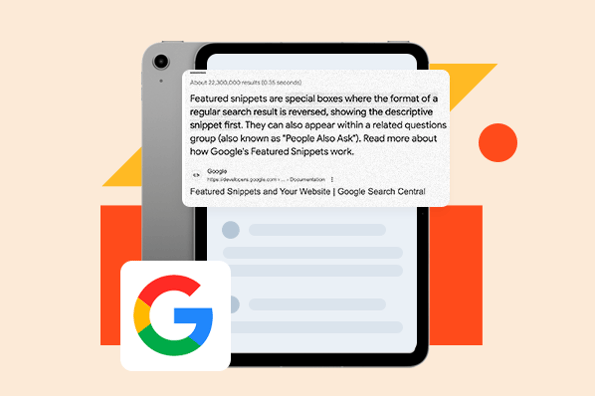
3. Optimize for User Intent:
- Understand search intent: Analyze why users are searching for certain queries and tailor your content to provide the most relevant and helpful information.
- Align with searcher expectations: Match the content format and tone to the user’s expectations for a seamless experience.
- Answer questions comprehensively: Provide complete answers, even if they’re not always direct, to satisfy user needs and potentially earn longer snippets. Boost Traffic by Optimizing for Google’s Featured Snippets.
4. Utilize Schema Markup:
- Explain content structure: Use schema markup to provide Google with explicit details about your content’s organization and meaning.
- Highlight key elements: Mark up lists, tables, FAQs, and other structured data to increase the chances of them being featured in snippets.
- Follow guidelines: Use schema.org to ensure correct implementation and avoid penalties for misuse.
Remember:
- Continuous monitoring: Track your content’s performance in search results and adjust strategies based on data and insights.
- Patience and consistency: Optimizing for Featured Snippets requires time and effort, but the potential benefits for visibility and engagement are significant.
- Focus on quality: Prioritize creating valuable, informative content that genuinely answers user questions, as this is the foundation for earning any snippet position.
Conclusion
As we conclude our exploration of Featured Snippets, I hope you’ve gained a deeper understanding of their various types, triggers, and optimization strategies. Remember, these valuable pieces of real estate in search results are a powerful tool for increasing website visibility, boosting user engagement, and establishing your content as a reliable source of information.
By tailoring your content to the types of queries that frequently trigger snippets, employing clear and structured formats, and prioritizing user intent, you can greatly increase your chances of grabbing the Google spotlight. While achieving a featured snippet might not be guaranteed, the effort you put into optimization will always benefit your website and audience by improving the quality and accessibility of your information.
So, keep these insights in mind as you craft your content, and who knows, you might just see your website shining at the top of search results, illuminating the path for curious minds with the perfect snippet-sized answer.
If you have any further questions or want to delve deeper into specific aspects of Featured Snippets, feel free to ask! I’m always here to help you navigate the ever-evolving world of search and keep your content shining brightly. Boost Traffic by Optimizing for Google’s Featured Snippets.
I appreciate you reading my full article, How to Increase Website Traffic through Optimization for Google’s Featured Snippets
Check My Latest Review:
- Glide Review: Finds Hidden Links Inside Popular YouTube Videos

- WP AI Hub Review: Revolutionize WordPress with 250+ AI Apps

- InfinityBiz Review: Unlimited Email Capabilities at Your Fingertips

- Logo Animyze Review: Elevate Logos, Attract Top Clients!

- MailPal Review: Unlimited Email Sends to Unlimited Subscribers



